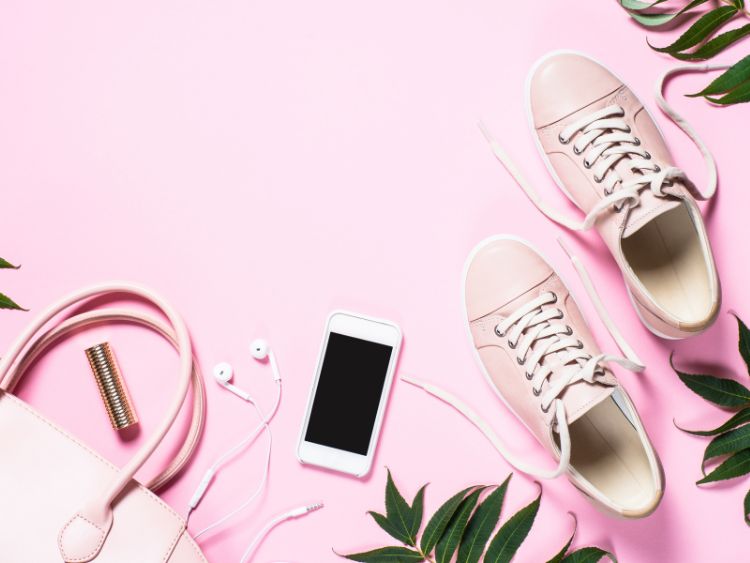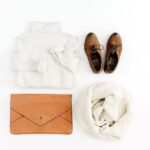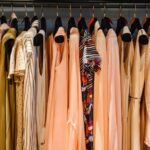The 1930s was a decade of transformation in fashion, blending practicality with elegance in response to the economic challenges of the Great Depression. Despite financial hardships, fashion enthusiasts found creative ways to remain stylish. Let’s explore the distinct trends of 1930s fashion that left a lasting impression on the world.
1. The Rise of 1930s Fashion
The 1930s brought a new sense of refinement to fashion, departing from the rebellious flapper looks of the 1920s. With the onset of the Great Depression, clothing styles became more conservative yet maintained a touch of glamour. The era was all about achieving elegance on a budget. Women turned to home sewing, refashioning older garments, and repurposing materials.
1930s fashion was characterized by longer hemlines, a return to natural waists, and more fitted designs. Hollywood played a significant role in shaping trends, as movie stars like Greta Garbo and Joan Crawford influenced public taste with their on-screen outfits.
2. Key Fashion Trends of the 1930s
In the 1930s, fashion was about simplicity, sophistication, and ingenuity. Here are the most defining trends:
- Silhouettes: Dresses featured bias cuts, creating a smooth and flattering fit that hugged the body’s natural curves. The waistline returned to its natural position, and skirts became longer, typically falling just below the knee or mid-calf.
- Shoulder Emphasis: Shoulder pads became a popular addition to garments, giving women a stronger, more structured silhouette. This trend later evolved into the exaggerated shoulder designs of the 1940s.
- Fabric Choices: Due to financial constraints, women often relied on cheaper materials like rayon, which could mimic the luxurious feel of silk. Cotton and wool were also common fabrics.
- Daywear: Women’s day dresses in the 1930s featured simple lines, modest necklines, and practical designs that allowed ease of movement. Florals, plaids, and polka dots were popular patterns, offering a cheerful contrast to the tough economic times.
- Evening Gowns: For more formal occasions, evening gowns became the epitome of glamour. These gowns were typically long, often backless, with intricate beading or embellishments. Satin and velvet were the go-to materials for evening wear.
3. The Influence of Hollywood on 1930s Fashion
Hollywood had a profound impact on 1930s fashion. While everyday women had to be mindful of their spending, movie stars became symbols of opulence and elegance. Actresses like Katharine Hepburn and Carole Lombard popularized the idea of high fashion, influencing department store collections across the country.
The 1930s fashion films often showcased sleek, floor-length gowns, fur stoles, and sophisticated hats, driving women to imitate these looks despite financial hardships. Movie costume designers like Edith Head and Adrian became celebrities in their own right, leaving an indelible mark on the fashion industry.
4. Accessories: Elevating the Look
Even during the toughest economic times, accessories played a crucial role in defining an outfit’s character. Accessories were an affordable way to refresh an outfit and add a touch of luxury. Some of the most popular accessories of the time included:
- Hats: Cloche hats carried over from the 1920s but were reimagined with more structured brims and embellishments. In the mid-1930s, wider-brimmed hats became fashionable.
- Gloves: Gloves were essential for both day and evening wear. Short gloves were common for daytime, while long, elbow-length gloves were paired with evening gowns for formal events.
- Handbags: Women carried small, structured handbags made from leather or fabric. These bags were often designed with Art Deco influences, featuring geometric shapes and bold hardware.
- Shoes: T-strap and Mary Jane heels were popular choices for women. Shoes often had modest heels, focusing more on practicality than extravagance.
5. Men’s Fashion in the 1930s
Though women’s fashion often steals the spotlight, 1930s fashion for men was equally interesting. Men’s clothing was tailored and well-constructed, with a focus on creating a sharp and refined appearance. Some key elements of men’s fashion included:
- Suits: Double-breasted suits were the height of sophistication. Suits were generally fitted, with wide shoulders and narrow waists, giving men a V-shaped silhouette.
- Ties: Ties in the 1930s were often wider than in previous decades and featured bold, geometric patterns.
- Hats: Just as with women, hats were an essential part of men’s outfits. The fedora was the most popular style, adding a sense of mystery and allure to any ensemble.
- Footwear: Oxfords and brogues were the go-to shoe styles for men, crafted from high-quality leather to last.
6. Frequently Asked Questions About 1930s Fashion
Q: What fabrics were popular in 1930s fashion?
A: The 1930s saw the use of cheaper, more practical fabrics like rayon, cotton, and wool. For eveningwear, more luxurious materials like silk, satin, and velvet were popular.
Q: How did the Great Depression affect fashion trends?
A: The economic constraints of the Great Depression meant that fashion had to be both practical and affordable. Many women refashioned old garments or sewed their own clothes at home, using cheaper fabrics and simple designs.
Q: Were shoulder pads a significant trend in the 1930s?
A: Yes, shoulder pads were introduced in the late 1930s, giving women’s clothing a more structured and masculine appearance. This trend grew even more prominent in the 1940s.
Q: What role did Hollywood play in shaping 1930s fashion?
A: Hollywood stars heavily influenced 1930s fashion, with movie costumes setting trends. Women looked to movie stars for inspiration, imitating the glamorous looks of actresses like Greta Garbo and Katharine Hepburn.
7. Summary
The 1930s fashion era was a fascinating blend of elegance, practicality, and creativity. Despite the economic hardships of the Great Depression, the decade produced some of the most iconic trends in fashion history. Women found ways to look stylish while being mindful of their finances, and Hollywood’s influence helped create a sense of glamour that endures today.
From bias-cut dresses to structured suits, the styles of the 1930s continue to inspire fashion enthusiasts around the world. Whether you’re drawn to the refined silhouettes or the elegant accessories, the legacy of 1930s fashion remains as timeless as ever.
Authoritative Sources:
- https://www.metmuseum.org/art/collection/search/1930sfashion
- https://www.vam.ac.uk/articles/1930s-fashion
- https://fashionhistory.fitnyc.edu/1930-1939/







